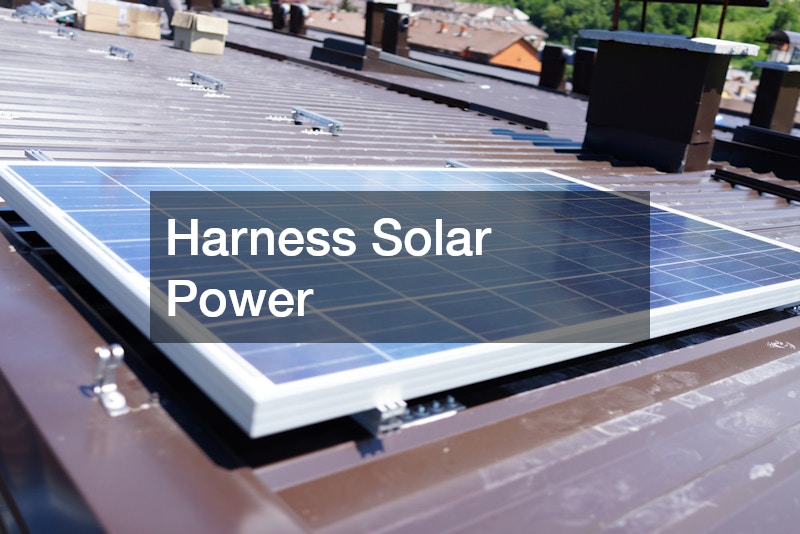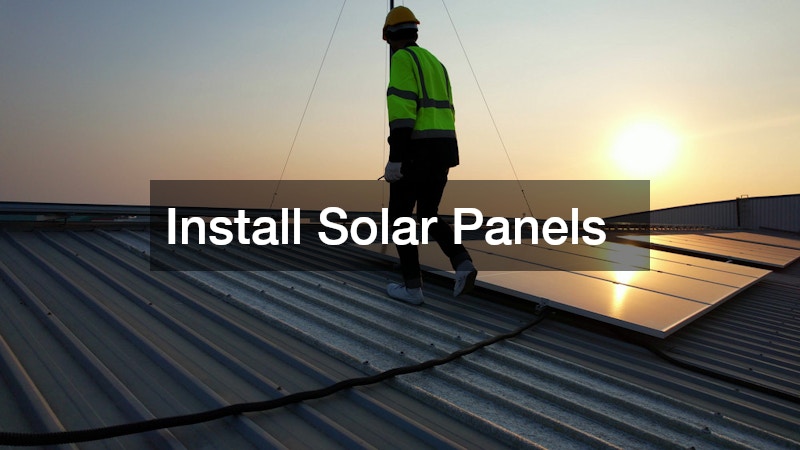In Australia’s sun-rich environment, turning your roof into a solar saver investment is a smart choice for homeowners seeking to reduce power bills and increase property value. With advances in technology, government incentives and rising electricity costs, installing solar panels offers an effective way to harness solar power and gain long-term financial and environmental benefits.
This article will guide you through the essential steps, from understanding solar power basics to planning your solar installation and finally installing solar panels properly. Whether motivated by savings or sustainability, this comprehensive approach helps you maximise your return and avoid common pitfalls.
Harness Solar Power

Australia’s abundant sunlight makes solar power an ideal energy source for homes nationwide. Solar panels convert sunlight into electricity through photovoltaic cells. This electricity powers your home and reduces reliance on the grid, cutting your energy bills significantly.
Beyond financial savings, solar power is environmentally friendly, reducing greenhouse gas emissions and supporting Australia’s renewable energy goals. By feeding excess electricity back into the grid, some homeowners even earn additional income through feed-in tariffs, increasing the return on their energy saver investment.
Furthermore, solar energy helps reduce the strain on the national grid, particularly during peak demand periods. As more homes generate their own power, the overall stability and sustainability of Australia’s energy system improve. This collective impact not only benefits individual households but also the community at large.
Plan Solar Installation

Proper planning is crucial for a successful solar installation. Factors such as roof orientation, shading and panel capacity affect performance and savings. South-facing roofs in Australia typically receive the most sunlight, but east or west-facing roofs can still benefit from solar power with the right design.
When planning solar installation, consider the size of your household, energy usage patterns and budget. Understanding your daily and seasonal energy consumption helps in selecting a system size that matches your needs without overspending. It’s wise to analyse past electricity bills or use online calculators designed for Australian homes.
Researching reputable installers and comparing quotes ensures quality work and reliable warranties. Look for installers accredited by the Clean Energy Council (CEC), as they follow strict standards for installation and safety. Additionally, check for local government rebates or incentives that can reduce the upfront costs, such as the Small-scale Renewable Energy Scheme (SRES).
Good planning not only maximises energy generation but also ensures compliance with regulations and smooth installation processes. Don’t forget to factor in future home upgrades or energy additions, such as electric vehicles, when sizing your solar system.
Install Solar Panels

Installing solar panels requires expertise and adherence to safety and legal standards. Professional installers assess your roof, design a customised system and handle the necessary permits. Installation typically takes one to three days, depending on system size.
During installation, panels are securely mounted, electrical components connected and the inverter installed to convert DC electricity to AC for household use. Once completed, your system is inspected and connected to the grid. The installer should also guide you on operating your system and monitoring its performance.
Regular maintenance, such as cleaning panels and monitoring system performance, helps maintain efficiency over the system’s lifespan, typically 25 years or more. While solar panels require minimal upkeep, clearing debris, dust or bird droppings ensures that panels absorb maximum sunlight.
In some regions, after heavy storms or dust events, more thorough cleaning may be necessary. Professional maintenance services can inspect wiring, mounting hardware and inverter functionality to prevent issues and extend system life.
Maximise Energy Saver Investment
To maximise your solar saver investment, monitor your energy usage and system output. Smart meters and energy apps provide real-time data, helping you adjust habits to increase savings. For instance, running heavy appliances during daylight hours can reduce grid electricity consumption.
Consider adding battery storage to store excess energy for use during cloudy days or peak demand times. While batteries add to upfront costs, they offer increased independence and can further reduce electricity bills, especially with rising grid prices.
Reviewing your system periodically ensures it meets your household’s evolving needs. Staying informed about new solar technologies and government policies can also help you capitalise on future opportunities to enhance your solar installation.
Turning your roof into a solar saver investment is a practical way for Australian homeowners to cut power costs and support a cleaner environment. By understanding solar power, planning carefully and choosing professional installation, you ensure a system that delivers lasting financial and ecological benefits.
With ongoing savings, potential income from feed-in tariffs and rising energy prices, installing solar panels is an investment that pays off. Start your solar journey today and transform your rooftop into a powerful energy asset.
